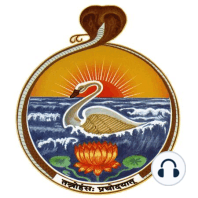61 min listen

55 – Where Do Our Invisible Mental Blocks Come From? | Patanjali Yoga Sutras | Swami Tattwamayananda
55 – Where Do Our Invisible Mental Blocks Come From? | Patanjali Yoga Sutras | Swami Tattwamayananda
ratings:
Length:
58 minutes
Released:
Feb 22, 2019
Format:
Podcast episode
Description
Lecture by Swami Tattwamayananda. The lecture begins with a review of the great contributions of the Indian sage Patanjali. The three Klesas, distractions are Raga, obsessive attachment, Dvesa, obsessive hatred, and Abhinvesa, fear. Their root is Avidya and Asmita, Ignorance and Identification with experiences. It seems simple to identify with our transcendental dimension and therefore end all difficulties but in reality, an endless cycle of Karma, Vritti, Samskara, Vasana from past lives create invisible mental blocks. Yamas and Niyamas, good mental food and good deeds purify the character and allow us to eventually remove our deep-rooted samskaras. With the Nirodha-Parinama stage, all such obstacles are removed. Verses: III.9
Released:
Feb 22, 2019
Format:
Podcast episode
Titles in the series (100)
3 – Distinguishing Valid Knowledge | Patanjali Yoga Sutras | Swami Tattwamayananda by Yoga Sutras and the World of the Human Mind